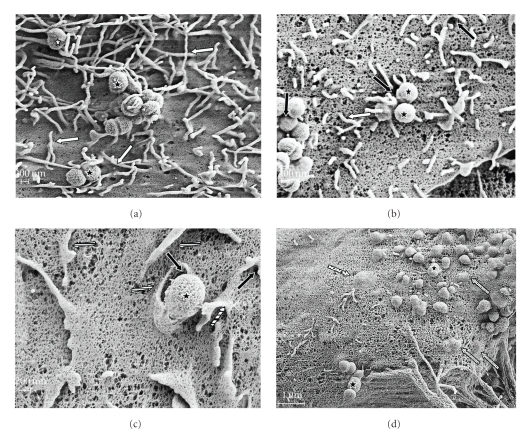Figure 5.
Scanning electron microscopy (SEM) of cocultures of bovine mammary epithelial cells with host-proteins pre-treated S. uberis. Streptococcus uberis was pre-treated with collagen, fibronectin, or lactoferrin and cocultured with bovine mammary epithelial cells. Cocultures were observed using SEM at different incubation times. Upon contact with S. uberis (*) bovine mammary epithelial cells reacted (a) with the formation of plasma membrane invaginations (black arrows) and “spaghetti like” filopodia (white arrows) that stick to and covered (b) S. uberis formations of more than one cell. Filopodia then seemed to become flap-like structures (striped arrows) that engulfed single S. uberis cells (c) and drove their internalization into host cells through cell membrane invaginations. The internalization process seemed to end with the “patching” of cell membrane invaginations through which S. uberis gained access into the host cell (dot-filled arrows (d)) with flap-like structures.

